
Dec 21 2023
8 min read

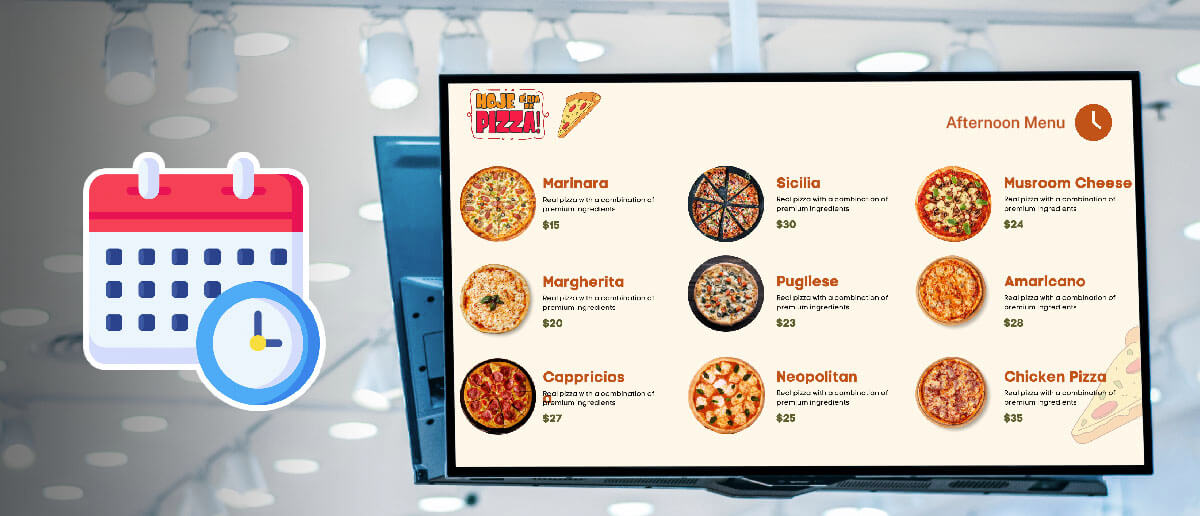
Dayparting is a strategy businesses employ to showcase specific digital content during particular times of the day. For example, a restaurant can organize its menus, promotions & offers to cater to specific meal times. Whether it’s breakfast, lunch, evening snacks, or even those delightful happy hours, segmenting the menu ensures that the right culinary experience awaits customers at the right time.
The main goal of dayparting is to ensure the content remains relevant to the specific audience demographic dominating consumption during a particular timeframe. Various industries, ranging from radio and television to advertisements, restaurants, and apparel stores, daypart offers to optimize their media presence.
Most restaurant businesses have moved from chalkboard menus and paper-based flyers to digital menu boards, QR code menus, dynamic ads & promotions using restaurant television networks.
With digital signage solutions like Pickcel, restaurants can create schedules for their ad campaigns and digital menus on the screen, allowing automatic content rotation.
Here are the three benefits:
A digital menu saves time and money as the recurring printing & logistic cost gets slashed. You can use these savings to improve other fronts of your business― hiring more staff, offering better customer experience, or opening more shops.
Every year, a staggering 1.4 billion tons of food goes to waste, with a significant portion originating from eateries. However, you can take a crucial step in reducing food wastage by dayparting your menus.
Let’s take a scenario.
Your eatery offers sandwiches and burgers all day long. However, you notice that post the afternoon drive, the demand sharply declines. There are barely any customers walking in and, this is the wake-up call!
Before implementing dayparting, you likely displayed the same menu throughout the day. Consequently, your restaurant staff had to keep ingredients stocked up, even with the declining demand.
Now, picture this: You utilize two separate menus. The first menu features your regular offerings from the early fringe until the morning drive.
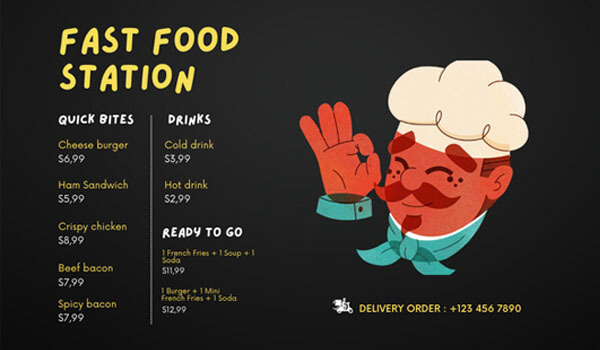
During the afternoon drive, you can schedule a different menu version where you add a discount on the sandwiches so that the excess stocked-up food gets sold.
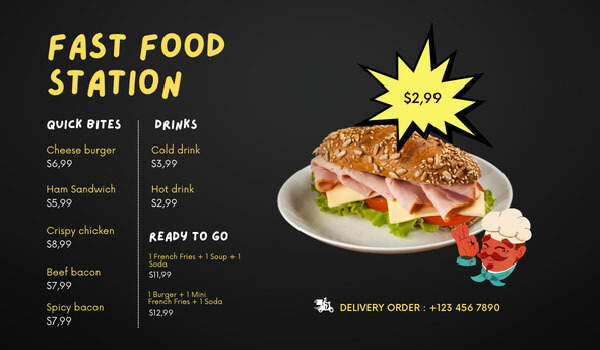
For a small business, you can manually update your menus for every meal offering, special occasion, etc. But imagine if a restaurant has branches throughout the city, in different cities, or across the globe. Would manual content rotation be rational?
To scale your business, you will invariably require the support of digital menu board software to segment your content.
Dividing digital menus based on early morning and 00 pm offerings has several benefits! However, to maximize effectiveness, it is crucial to establish the right underlying logic and strategies. Let’s delve into the key considerations of this scheduling approach and achieve optimal results!
Identifying target customers
Every restaurant has a different customer base. Identifying the customer type and targeting their time can help effectively schedule the digital content.
If I own a cafe, I would like to introduce my Happy Hour meals to the office goers during the evenings to lure in a crowd looking for relaxation after the day-long work.
Identifying the customer demographic will not only help in deciding the time and interval of dayparting but also the content.
For instance, if the highest sales of an ice cream shop on weekends come from teenage and young buyers, then two different ice cream menu designs can be scheduled: one for the weekdays and one for the weekends.
The weekend menu can have special offers, a bright and cheerful style, some young customers’ testimonials, and more.
Diversify the content
Rotating your digital menu board doesn’t necessarily mean showing different menu offerings at varying hours of the day. For instance, many smaller businesses like food trucks and drive-thru restaurants offer the same à la carte menu.
But they, too, can segregate their menus by having different versions. There are various ways to diversify your menus, such as:
Changing the layout, color, and visual appeal
Highlighting different items at different hours
Using separate templates and themes
Updating your screen content frequently is recommended not just to keep your customers’ eyes hooked to the screens and to improve sales but also to ensure that screen burns do not appear.
Using a content management system
Dayparting has to means content automation . Imagine having your employees change the menu 3-4 times daily!
A significant wastage of billable hours, right?
That is why you must use a digital menu software to schedule your restaurant menus, advertisements & promos. You can simply create a rough timeline in a document and then go on creating as many schedules as you want). The software will automatically publish your content on the specified date and time.
Here’s how the Pickcel software helps restaurant businesses create dayparts to auto-publish menus on electronic signage:
Data analytics helps in making accurate decisions in any business, and restaurants are no exception.
Analytics can be a game-changer as they will help restaurant owners offer personalized services to their customers, not based on assumptions but on collected insights. This data also helps in the efficient dayparting of the digital menus. This data also helps in the efficient content narrowcast segmentation.
One of the most prominent restaurant touchpoints to collect customer insights is the Point of Sale (PoS) systems. The PoS data can help you study:
food preferences throughout the day
daily changes in customer demographic, if any
comparison of data between different outlets of a restaurant
This information can benefit restaurant owners to daypart their digital menus and churn out the maximum revenue.
Let’s say a cafe sees a sharp decline in the sale of snacks and savories during the mid-morning, but your data shows that office goers prefer grabbing a quick coffee during this time.
You can use this information to create a variation of your regular menu for the mid-morning hours. On this special menu, you can introduce finger foods like mini sandwiches or mini burgers, or a combo of coffee and these items at discounted prices.
Likewise, multiple variations of the same menu can be created and scheduled to increase sales.
Pickcel is an excellent platform for creating segmented digital menu boards. Restaurants can benefit from this and create menu versions according to their business requirements.
Whether it is different slots of the day, separate menus for weekends and occasions, promoting new menu launches, or a combination of these― anything and everything can be created hassle-free using Pickcel.
Parting your menus ensures they are displayed as per the schedules. Let’s go through the steps of creating a schedule using Pickcel:
Step 1: Getting Started
Pickcel is a cloud-based digital signage content management system (CMS). Meaning you can schedule any content, including menu boards, ads & promos, live streams, images & videos, and so on.
All you have to do is create a free account with Pickcel and log in to your dashboard using the set credentials.
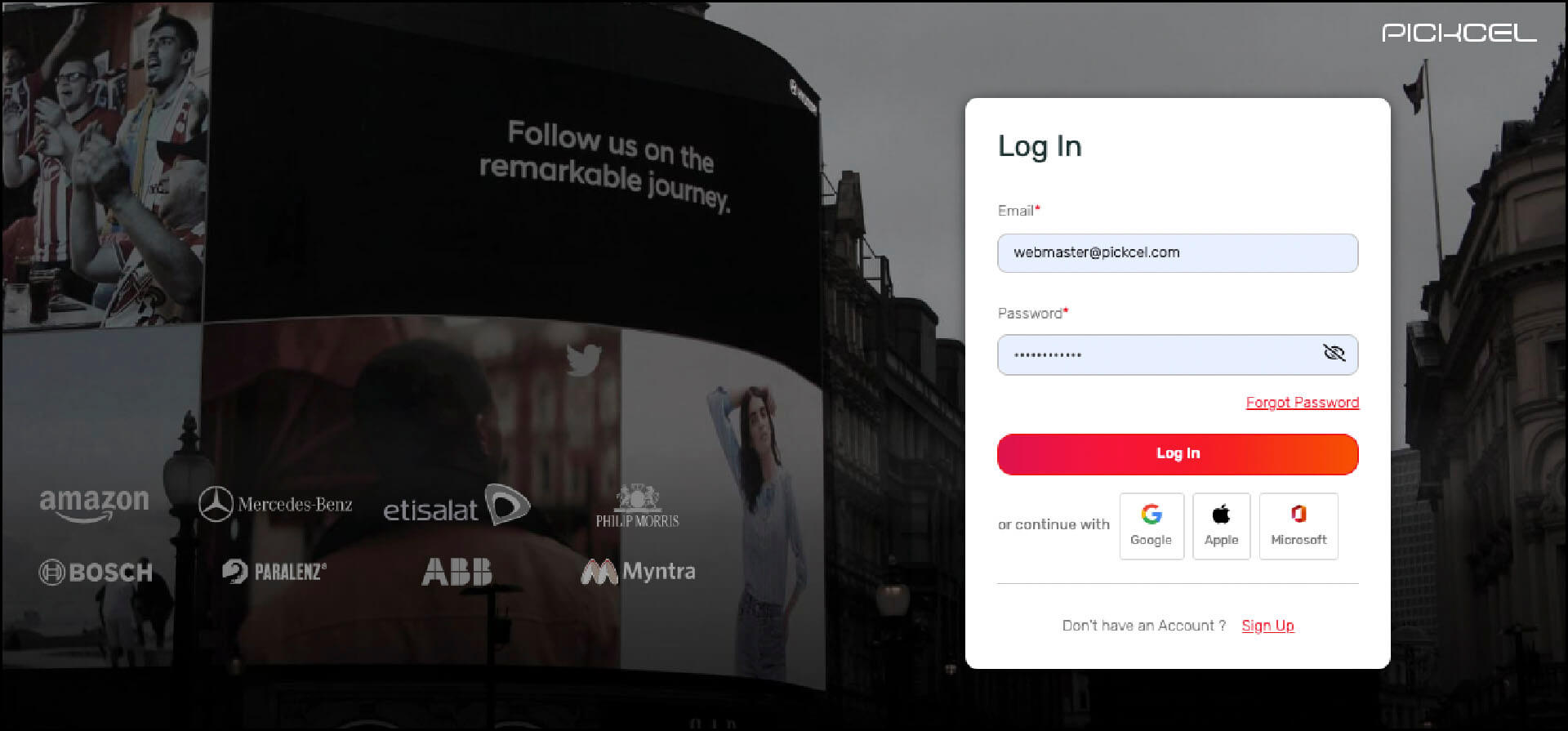
Step 2: Pairing your displays
Once you land on your Pickcel dashboard, you can go to the screen module and remotely register your digital displays using a 6-digit alpha-numeric code. Unless you pair your screens with the CMS, you will not be able to schedule your content on those screens.
Use this guide or watch this video to learn how to register your screens with Pickcel:
Step 3: Creating schedules
Before we jump into the steps of scheduling, a quick side not: if you have a pre-designed menu or content (in a soft copy), you can upload it using the + Add Media button of the Media module.
Like this:
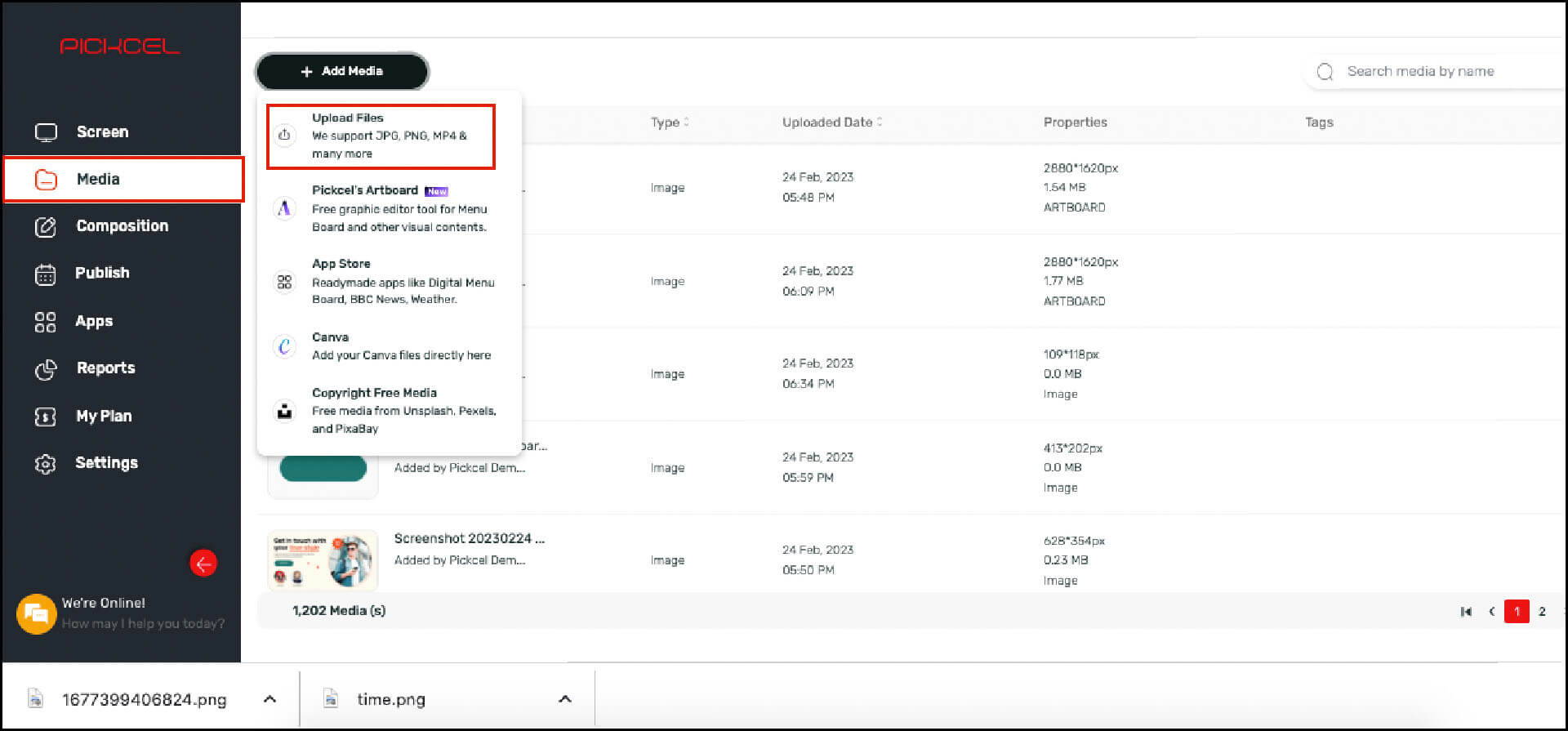
However, if you don’t have a pre-designed menu and want to build one using the Pickcel’s digital menu board app (free with the software), you will have to follow a few additional steps to design your digital menu before scheduling it.
Either way, once you upload or create your menu designs, it will get saved in the Media module of the Pickcel dashboard. Using your media, you have to create a composition before you can schedule that composition.
After that comes the steps of setting up your menu
3.1. Creating Day Sequences
A. Go to the Publish module and click on the +Publish button.
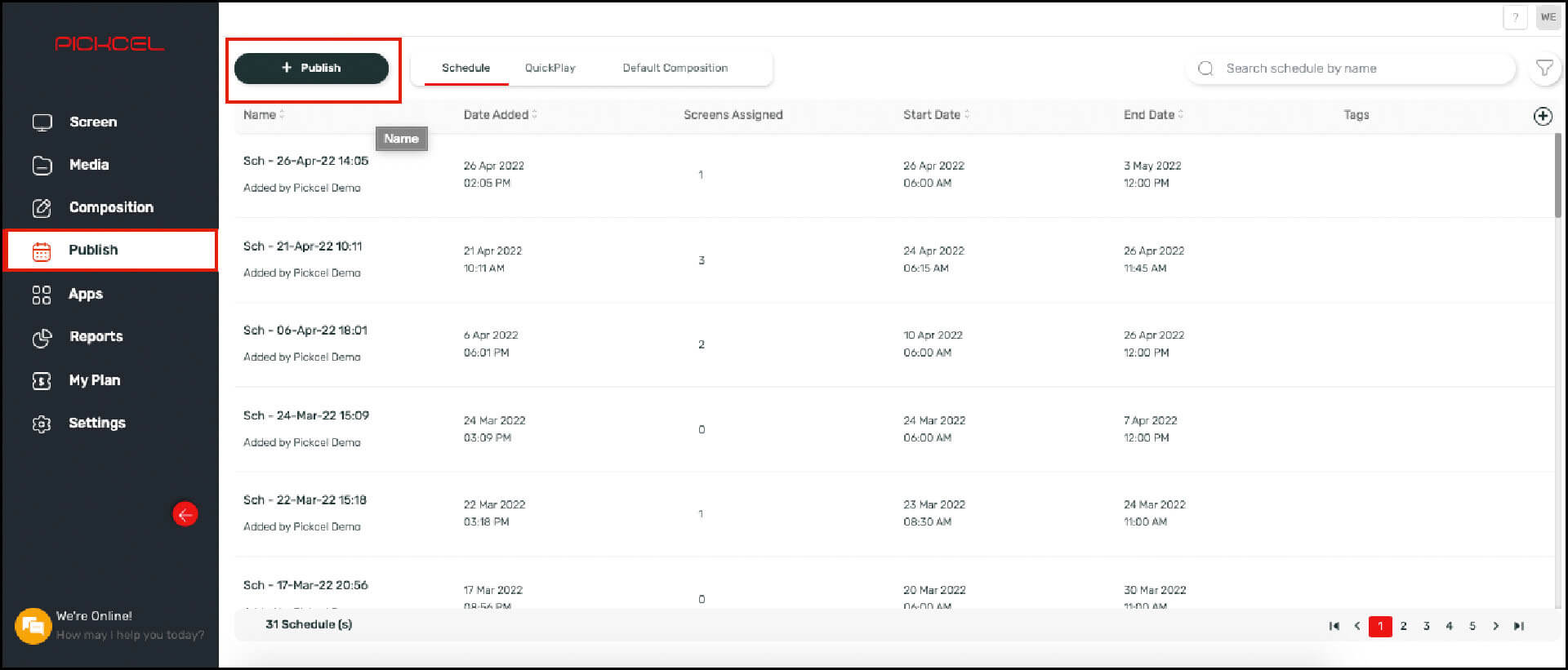
B. Select the Schedule option from the list. It will take you to the screen selection page.
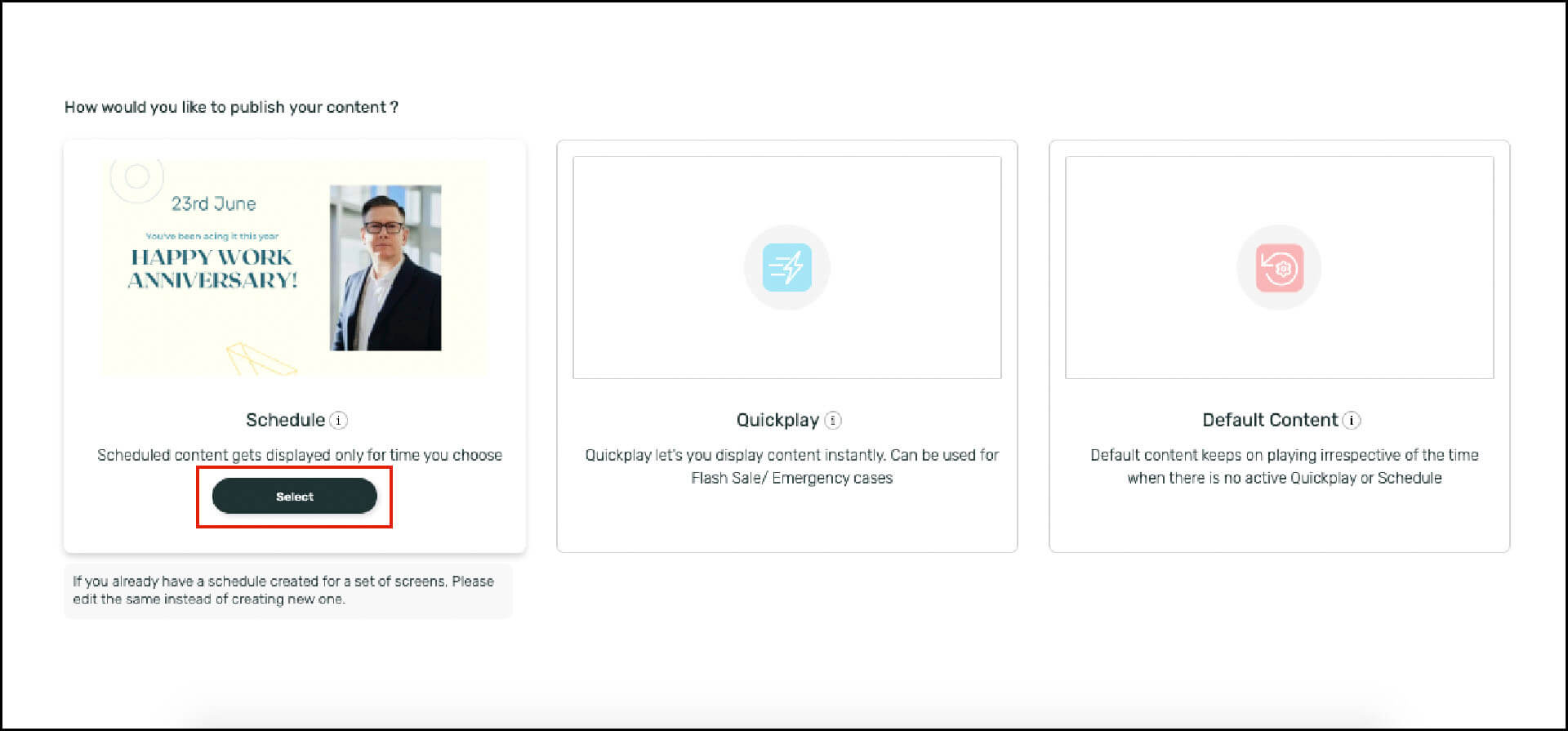
C. On the screen selection page, you will find all your registered displays. Choose the screens for which you want to schedule your content or you can skip it and assign the screen later.
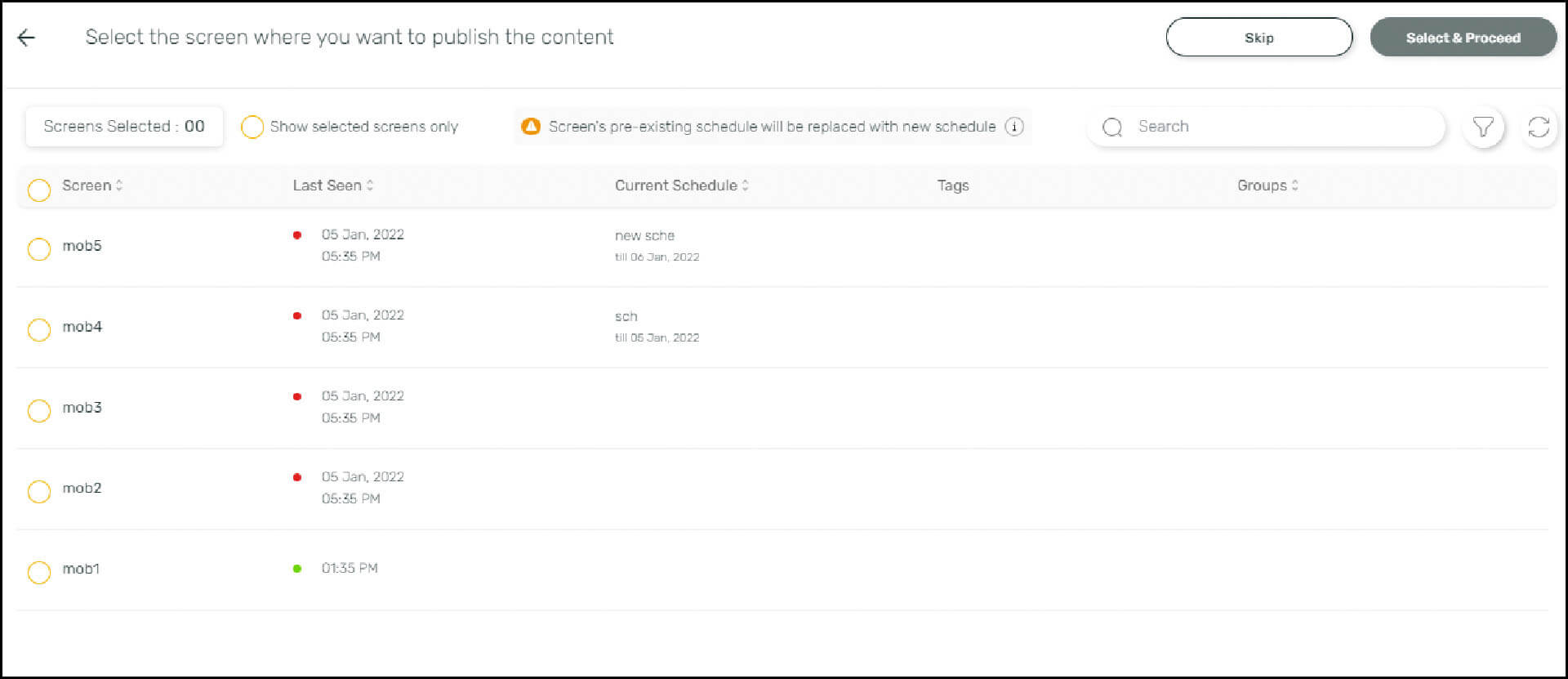
D. If you enter Select & Proceed, you will be taken to the scheduler page. Enter the name of the schedule and click on + Create New against day sequence.
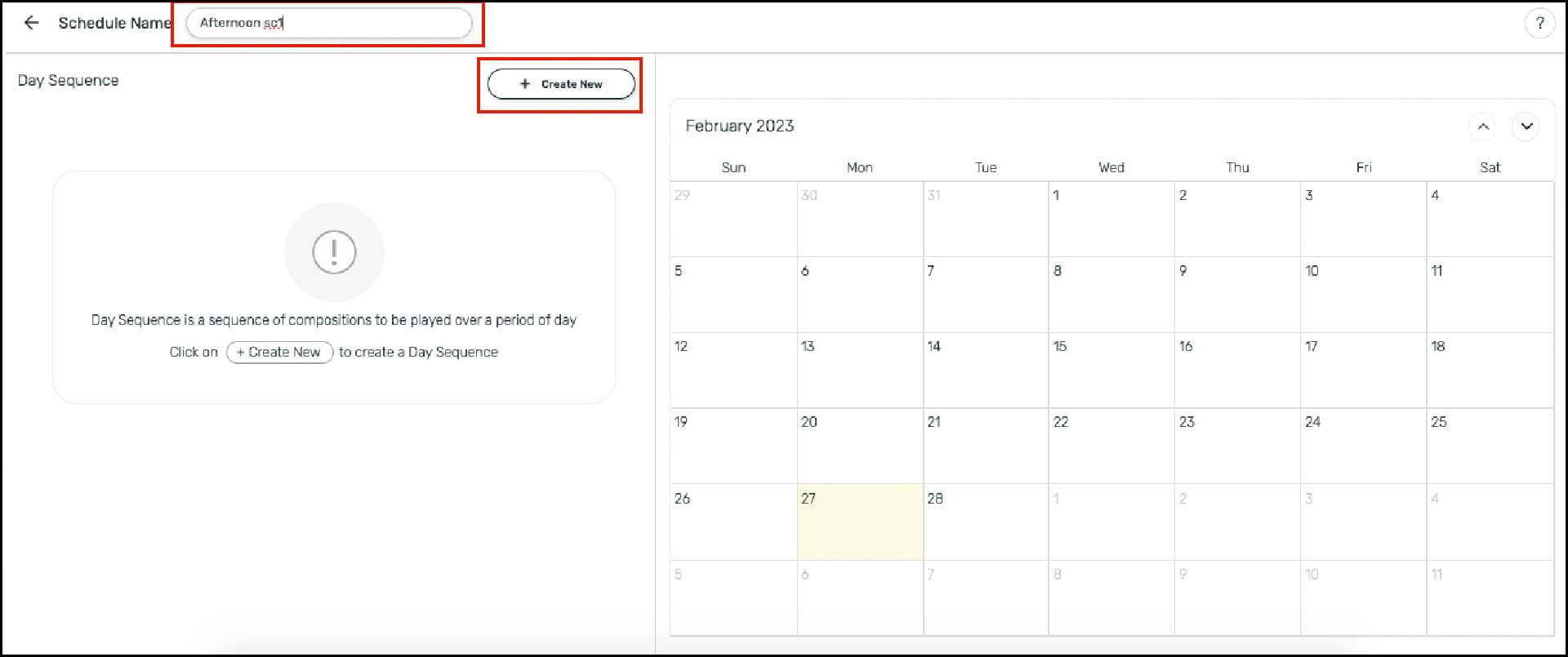
E. Click on the composition required, it will get added to the sequence manager on the right hand side.
By default it gets added to the 6am-7am slot, this can be adjusted by dragging. Multiple compositions can be added at different slots of a day, creating a day sequence.
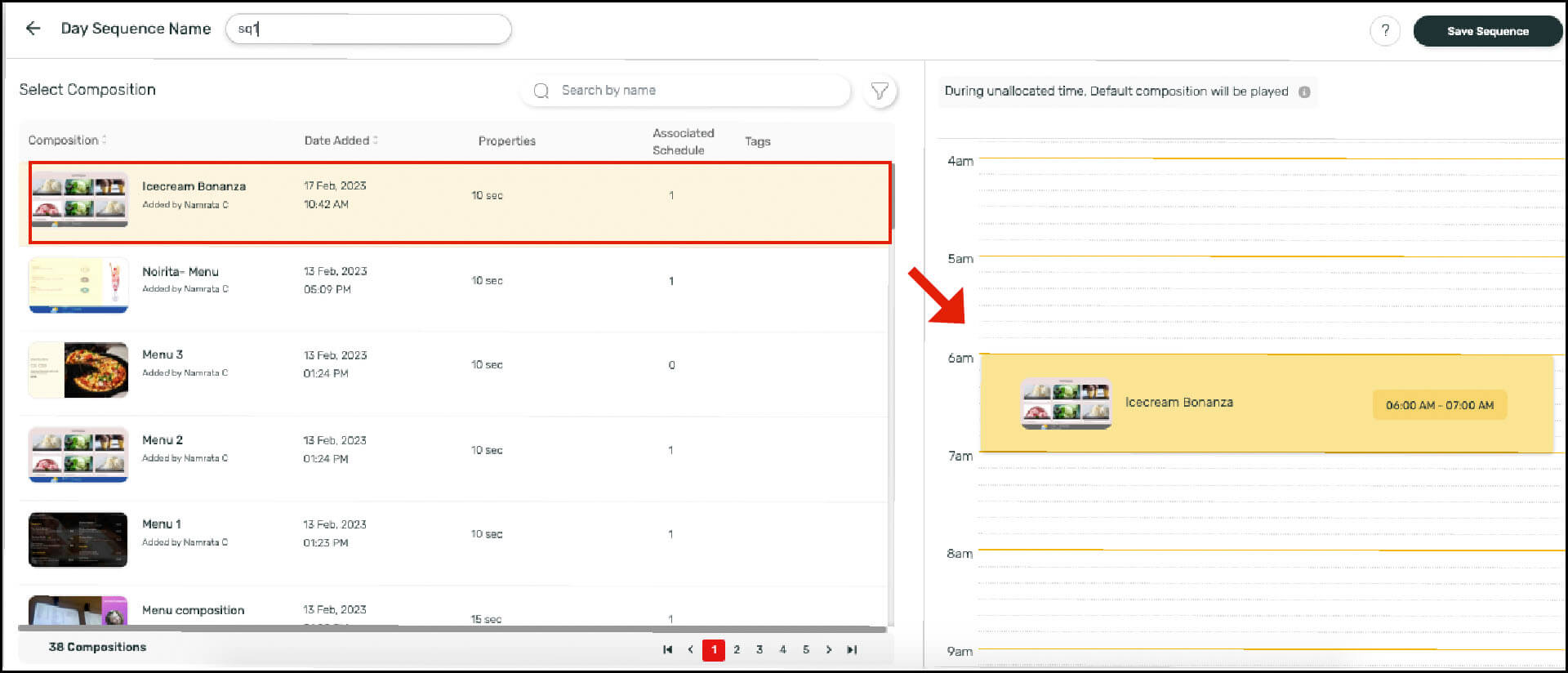
F. Next, click on Save Sequence. More day sequences can be added in the same way.
3.2. Adding day sequences to the calendar
Once your day sequence is ready, you have to assign the sequence to the dates on a virtual calendar. You can assign the sequence to very specific days or you can repeat the sequence everyday, every weekend, or Sunday, and so on.
Day sequences can be differentiated easily in the calendar using the color codes & the assigned names.
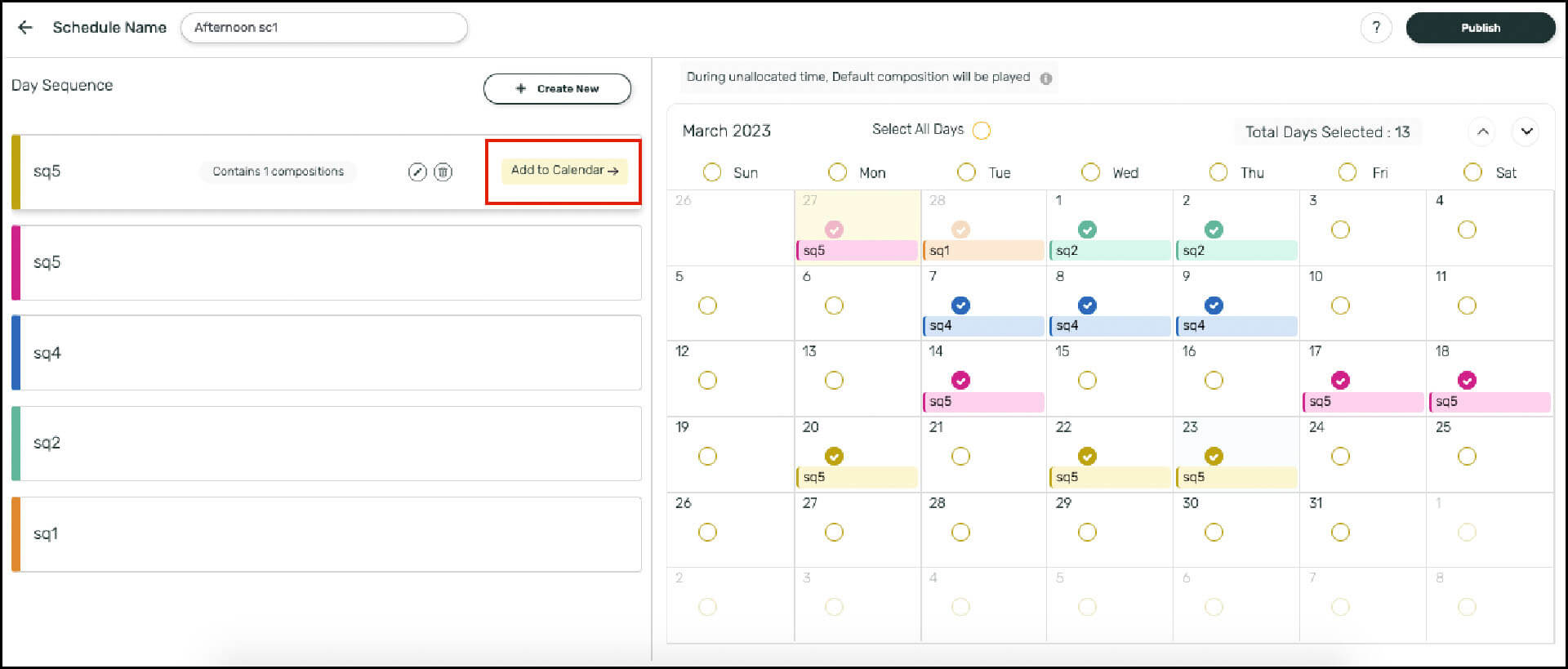
After assigning the day sequences on calendar, click on Publish.
And that’s all. Your digital menu boards will automatically play the content as per the schedules. You can always go back and make edits to your schedules.
tal menus and restaurant signage content, what are you waiting for? Now that you know the benefits of creating separate digital menus per the time of the day and restaurant signage content, what are you waiting for? Go for it and get your Pickcel subscription now!
If you are still not sure whether Pickcel is the best fit for your business, you can start a free trial to explore all the features.
Or, you can schedule a call with our team and discover the unlimited advantages of using Pickcel for restaurant digital signage. Our experts will offer you a free product demo and answer all your queries. You can also use this call to discuss complex customization and integration requirements to design a bespoke solution just for your business.

Dec 21 2023
8 min read
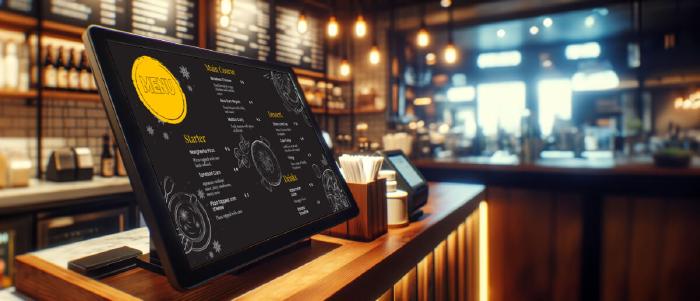
Dec 19 2023
8 min read

Dec 14 2023
7 min read
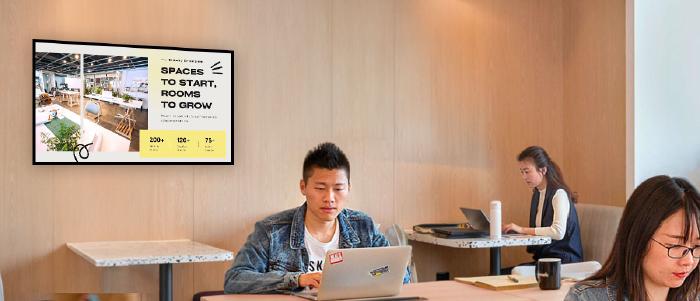
Dec 8 2023
8 min read
Take complete control of what you show on your digital signage & how you show it.
Start Free Trial Schedule My Demo